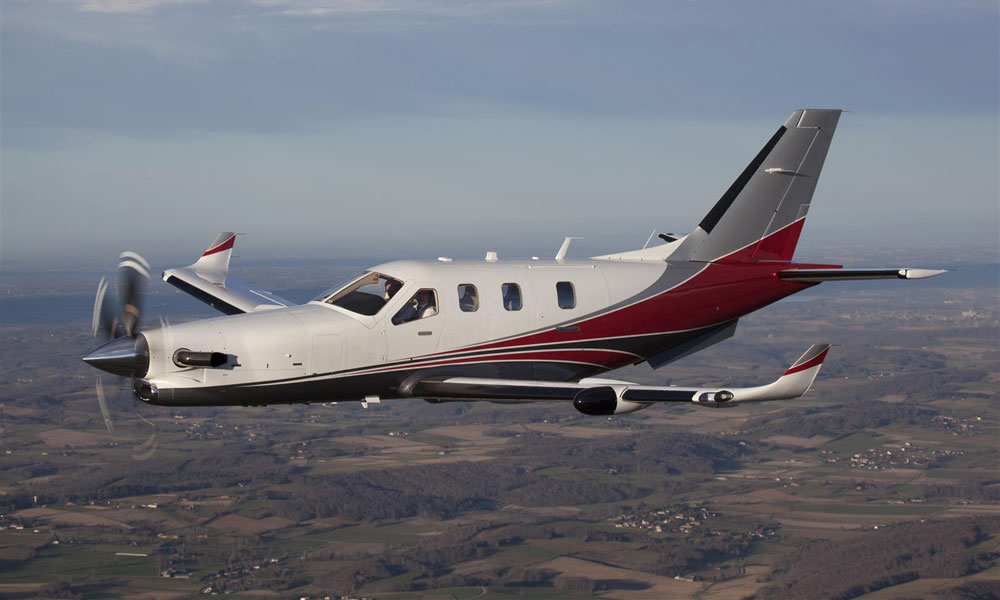
After Deadly Crashes, Pilots Group Warns of Hypoxia Risk
With flight enthusiasts in mourning after two crashes that may have been caused by a lack of oxygen—one involving an association president—a key aviation group is offering members tips on how to stay safe at high altitudes.
In the wake of two deadly crashes in recent weeks involving avid pilots, the Aircraft Owners and Pilots Association (AOPA) has a message for its members: The danger of hypoxia, or a limited oxygen supply to parts of the body, is one that general aviation pilots should take seriously.
The crashes, one of which involved an experimental plane that’s considered the world’s fastest certified single-engine turboprop, have drawn attention to a condition that can be a risk for pilots flying at high altitudes, where oxygen is at a reduced barometric pressure and harder to get into the lungs.
What Happened?
On Friday, Larry Glazer, the president of the TBM Owners and Pilots Association, died when his aircraft crashed off the coast of Jamaica, after Glazer lost consciousness at the controls. His Daher-Socata TBM 900 was the first plane of its kind that had been delivered to an individual customer.
Glazer was an experienced pilot, having logged more than 5,000 hours in various TBM aircraft. His wife, Jane, was also aboard. The plane, which took off from Rochester, New York, went far beyond its planned landing point of Naples, Florida, flying over Cuba before running out of fuel and descending into the Caribbean.
The good news is that [general aviation] pilots have a powerful low cost tool available to help avoid succumbing to the effects of hypoxia.
The tragedy drew significant public attention, partly because of Glazer’s prominence as a developer in the Rochester community, where he was the CEO and managing partner of Buckingham Properties. The other factor was the unusual circumstances of the crash: The plane flew for hundreds of miles at high altitudes with two unconscious people on board. It was tailed by F-15 fighter jets for much of the flight.
The crash came less than a week after a similar incident involving pilot Ronald Hutchinson, a Wisconsin resident who was flying solo to Virginia. Hutchinson’s Cirrus SR22T missed its mark by 138 nautical miles and was lost at sea, leading to a search-and-rescue mission. Like Glazer, Hutchinson was an experienced pilot who had logged thousands of hours over the years.
A Push for Precautions
In a safety alert [PDF] issued over the weekend, AOPA’s Air Safety Institute noted that hypoxia hasn’t been declared the cause of the two accidents, but the likelihood that it was a factor raises concerns that pilots should heed.
“The good news is that [general aviation] pilots have a powerful, low-cost tool available to help avoid succumbing to the effects of hypoxia,” the safety alert states. “A pulse oximeter is the best defense against hypoxia and can be purchased from a variety of aviation vendors or any drug store.”
AOPA recommends that pilots use the device to check their oxygen saturation levels every 10 to 15 minutes in unpressurized aircraft and as needed in pressurized aircraft. Pilots who think they may be experiencing hypoxia (symptoms include headache, hot flashes, and impaired vision) should use supplemental oxygen and contact air traffic controllers on the ground, the association says.
“While it’s impossible to say for certain that hypoxia was the primary cause, both mishaps’ flight profiles and the reports from the military pilots who intercepted the aircraft point toward this as a possibility,” AOPA stated in the alert.
The Socata TBM 900, one of the planes involved in the recent crashes. (Handout photo)






Comments